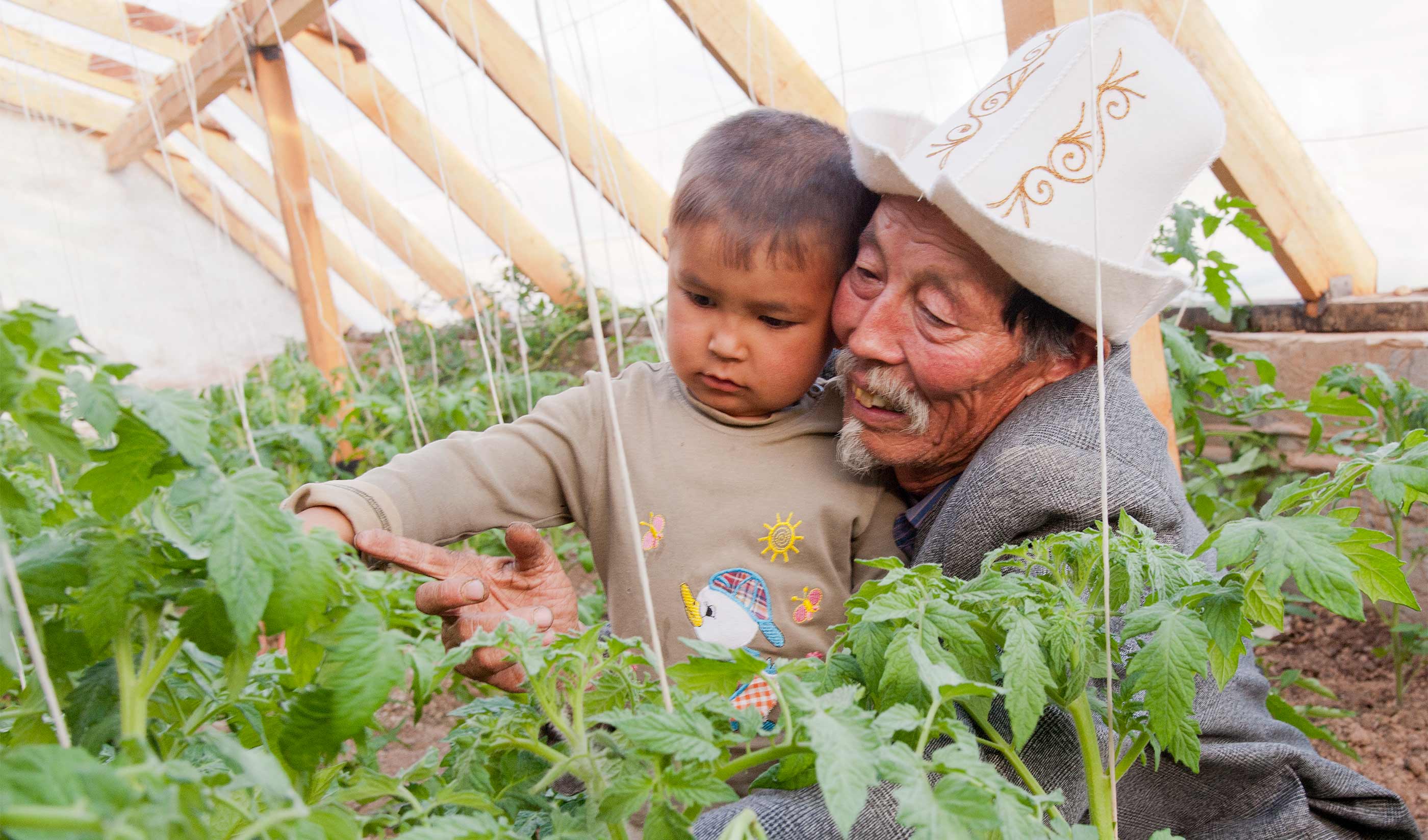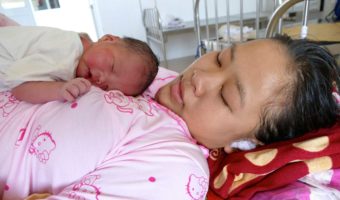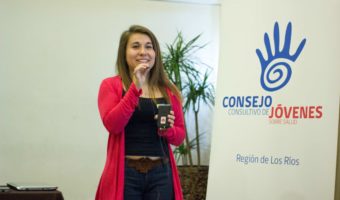The Nurturing Care Framework emphasises the importance of a multi-sectoral approach for young children’s optimal development: early learning, health, nutrition, responsive care, and security and safety are all critical for children’s development, yet often the focus is on only one of the components. Scaling those multiple pieces is even harder. In the Kyrgyz Republic, the Aga Khan Foundation (AKF) took the approach of scaling a multi-pronged and bottom-up approach to nurturing care.
The Aga Khan Foundation is part of the Aga Khan Development Network (AKDN) which works in over 30 countries around the world. AKDN’s annual budget for non-profit development activities is approximately USD 950 million. Its economic development arm, the Aga Khan Fund for Economic Development (AKFED), generates annual revenues of USD 4.3 billion, but all surpluses are reinvested in further development activities in fragile, remote or post-conflict regions.
The Aga Khan Foundation has been in the Kyrgyz Republic since 2002. Its activities aim to improve the quality of life of the Kyrgyz people, and are guided by messages from His Highness the Aga Khan, the AKF’s founder and chairman, who believes that:
development is sustainable only if the beneficiaries become, in a gradual manner, the masters of the process. This means that initiatives cannot be contemplated exclusively in terms of economics, but rather as an integrated program that encompasses social and cultural dimensions as well. Education and skills training, health and public services … are among the various aspects that must be taken into account.
(AKDN, online)
This requires a multi-sectoral and bottom-up approach from the beginning. It calls for active inclusion of communities and local government in shaping a high quality of life for themselves. These critical values underpin AKF’s contribution in the Kyrgyz Republic, and as a result, the local health and education departments are leading and scaling their own early childhood services. These local government leaders are now influencing national policy to achieve national scale.
Starting a multi-pronged nurturing care strategy in the Kyrgyz Republic meant working with communities to understand their culture, and finding where parents and young children were located. By identifying where people spent their days – in community health centres, at home or in the pastures with their families, in community centres, in schools, etc. – AKF gained a better understanding of the natural entry points by which it could engage with and mobilise communities, and thereby initiate and influence local government around multi-sectoral early childhood development. There are currently four programmatic entry points in this strategy that reach families and children, especially the most marginalised.
Intervention area 1: Community health workers
Community health workers, who are called Primary Medical health staff, are the backbone of the health system in rural communities in the Kyrgyz Republic, and the critical platform for reaching children in the first 1000 days of life. Working in partnership with the Johnson & Johnson Corporate Citizenship Trust and the Ministry of Health, the AKF mobilised them to support nurturing care for pregnant women, newborns, toddlers and families in three ways.
First, to improve antenatal and postnatal care, the AKF started 24 birth preparedness schools (called Parent Schools) in remote areas of Naryn and Osh oblasts. Parent Schools build awareness among new and expecting mothers on the importance of breastfeeding, nutrition, prevention of anaemia, danger signs during pregnancy, and the importance of fathers’ involvement and children’s development. AKF integrated an adapted version of the Care for Child Development package into these Parent Schools.
Second, the Ministry of Health mandates 17 home visits by community health workers in the first year of life, once each quarter between 1 and 2 years old, and twice a year between 2 and 3 years old. The community health workers use an adapted version of the Care for Child Development package during home visits.
Third, each child born in the Kyrgyz Republic receives a health card, which includes his or her immunisation record and measurements of height, weight, head circumference, etc. AKF is now working with the health department to integrate critical messages from the Care for Child Development package about responsive care, stimulation, health and nutrition into these health cards.
Intervention area 2: Community-based early learning through yurt kindergartens
Many rural communities in Kyrgyz Republic are nomadic and spend about three months per year moving their livestock to high pastures or jailoo. During this time, young children are not able to access learning activities. To address this challenge for nomadic children and families, AKF created a mobile early learning approach called ‘Jailoo Kindergarten’ that uses yurts. Yurts are houses made from wooden sticks covered with felt, which nomadic communities move from pasture to pasture. They are easy to pack up and carry as communities travel from one location to the next. Usually families sleep in yurts and keep all necessary life utilities inside.
The Jailoo Kindergartens are now part of a system of linked central and satellite kindergartens. The yurt kindergartens have been exceptionally popular. Early surveys indicated that when children who attended them entered primary school, they outperformed others in both reading and maths. Providing early learning activities in mobile locations where families live during these months has significantly increased access to early learning. The model has been replicated and is currently being scaled nationally by the international foundation, Roza Otunbayeva’s Initiative (whose founder and leader is former President of the Kyrgyz Republic, Roza Otunbayeva), and communities themselves.
Intervention area 3: Parental Resource Centres in community spaces
Parental Resource Centres, established in community and school libraries in villages, towns and cities, are places where families go to meet each other, obtain and share information and skills, and use resources like children’s books, brochures or leaflets on health and child development, toys that can help stimulate their children’s development, and so forth.
Many communities have libraries, but for years there was a dearth of children’s books in the Kyrgyz language. AKF not only collected local stories and produced books in Kyrgyz, but used this opportunity to go where parents went to promote responsive caregiving, stronger parent–child interactions and literacy. Moreover, AKF runs the Reading for Children programme, which helps parents understand more active ways to use books to interact with and read to children. It helps them deepen conversations and discussions about pictures and stories in books.
Intervention area 4: Use of technology to scale early childhood development messages
The Aga Khan Foundation worked with the company Colibri Studio to integrate critical messages from the Care for Child Development and Science of Early Child Development training packages into a mobile application called BalAppan. It is free and can be downloaded from Google Play. This mobile application contains three parts:
- Recommendations for parents on child development through play and communication from birth to 2 years and After reading the recommendations, parents are requested to pass a test on each age group (birth to 1 week, 1 week to 6 months, 6–9 months, 9–12 months, 12–24 months, and over 24 months).
- 12 short videos on topics including environmental safety, child development during household work, the role of play, the importance of handmade toys, communication with the baby, the role of parents, communication from birth, the father’s role, sibling support, the importance of reading, the grandparents’ role.
- Instruction for making one’s own toys: an animated representation of the process of making toys from available materials at home.
Conclusion
Scaling early childhood interventions is often thought of from the perspective of a national-level policy or programme that trickles down to local levels.
The Aga Khan Foundation took a different, bottom-up approach – starting with a few local areas, listening to communities and local government, and considering where families and young children normally went. Co-designing interventions with local government ultimately achieved their buy-in and political commitment, though this took time. Involving communities early and throughout the process means they now own the interventions and have become advocates for embedding nurturing care into national government policies that are leading to scale.
References can be found in the PDF version of the article.


